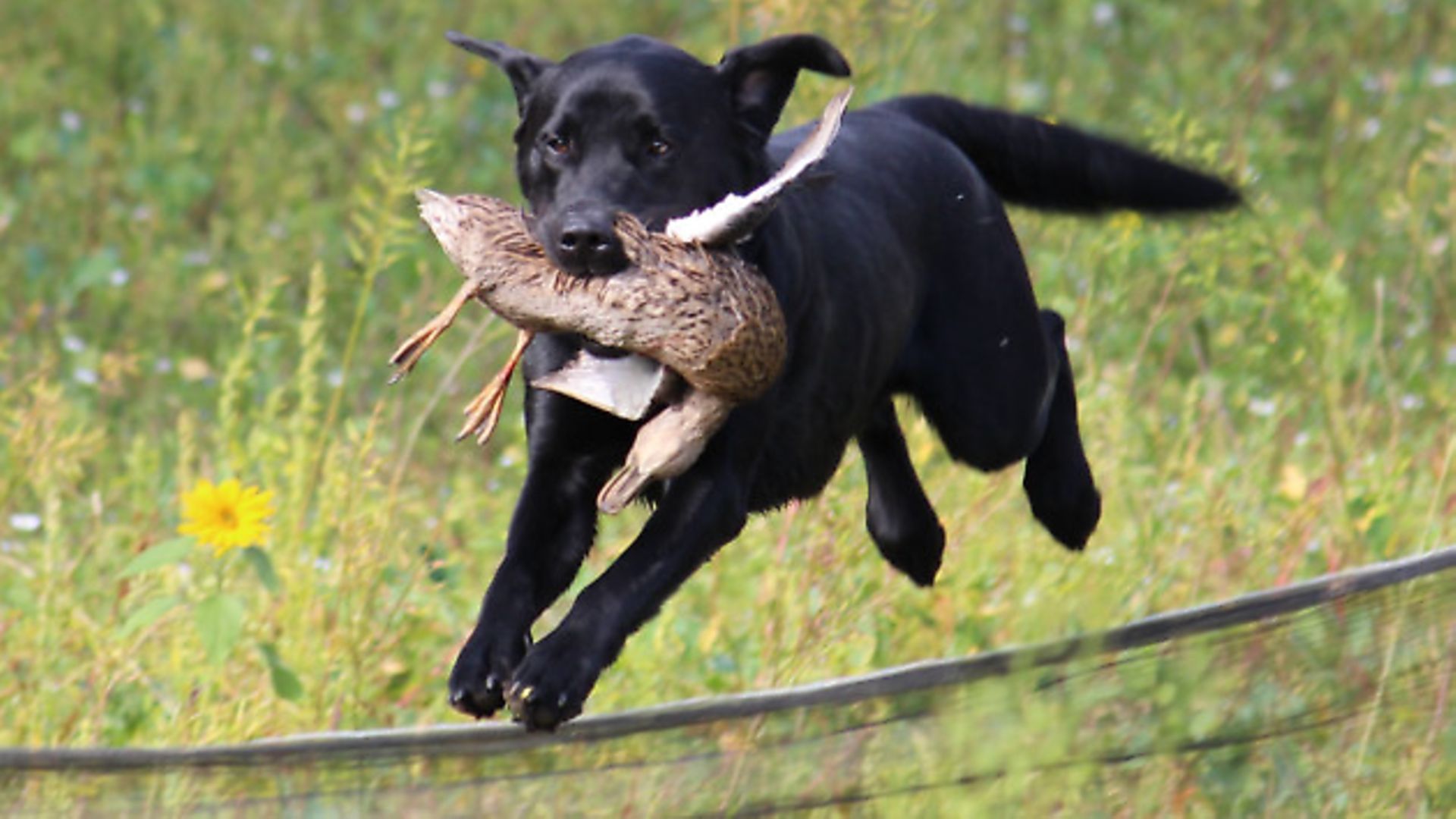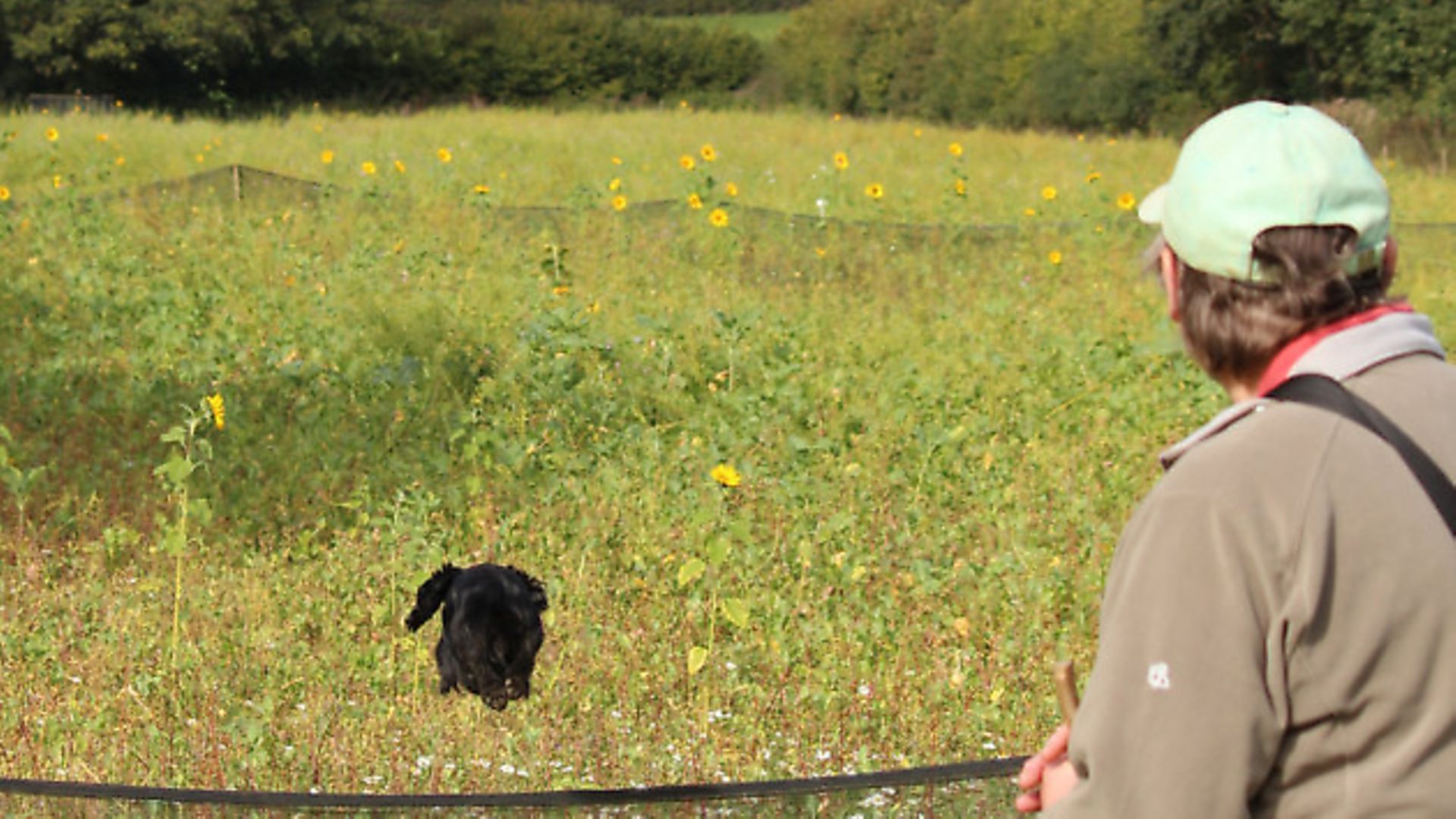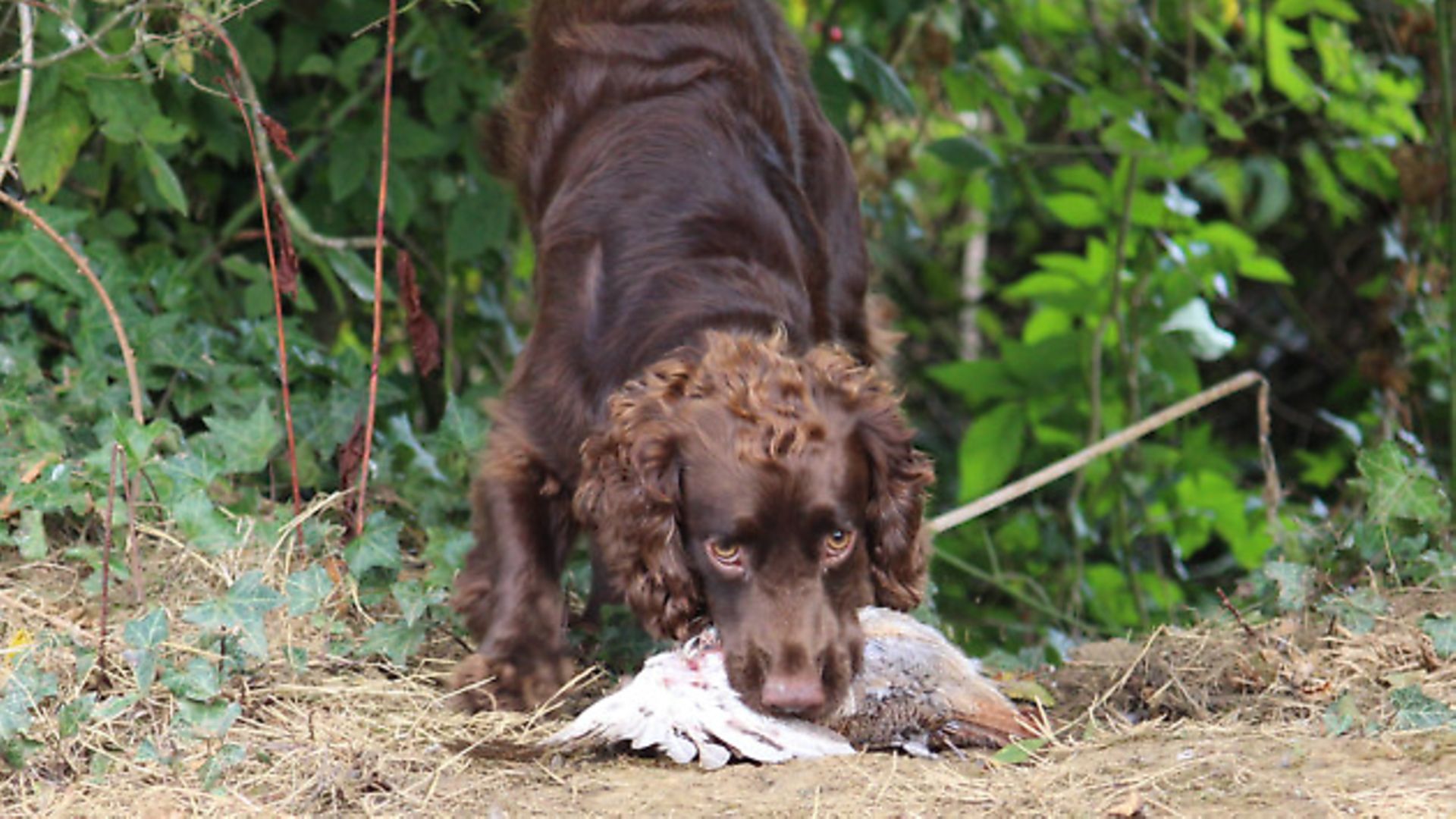Get your dog effectively crossing obstacles in the field with Howard’s top advice
 credit: Archant
credit: Archant
Retrieving game in the shooting field can be both physically and mentally demanding for our gundogs, so it’s important that we do our best to prepare them for the job. Stone walls, gates, hedges, ditches, steep banks, water, different types of cover or crops, and even just a change in ground type are physical and mental barriers that your dog will be expected to cross.
Inexperienced dogs will often be fazed by these barriers, so let’s have a look at some training exercises that will build the dog’s confidence and experience. Wherever possible a memory retrieve is the best way to start.
The memory retrieve makes things much easier for him. For example, where we want the dog to go over or through something for the first time the simplest thing to do is to put the dog at heel and walk, climb or even swim (swimming would be a little over the top but needs must) with him across the obstacle to where you are going to place the dummy or bird.
 credit: Archant
credit: Archant
Sit him up, put the dummy down so that the dog clearly sees where it is and then walk, climb or swim back to where you want to send him from. You then simply command him to go and retrieve it. This could be a send away or any of the directional commands; just put yourself into the relevant position and give him the signal.
The term memory retrieve means just that and providing you have not made things too difficult or long-winded the dog will race back to the retrieve, negotiating any obstacles on the way whilst absolutely clear as to where that dummy is. This is positive training. You are setting the dog up to ensure he doesn’t fail; this in turn builds his drive and confidence. So with this in mind you must factor in the age and experience of the dog, both to be able to cope with the obstacle and also his memory capacity. Do not underestimate how difficult this can be for young dogs. Girls, have a think about just how stupid your husband is… there are similarities here. If there is too long a time span or he encounters a lot of distractions (husband or dog) between the placement of the retrieve and you asking him to go and find it, the memory will have been erased and the whole exercise will go horribly wrong resulting in frustration, confusion and sometimes conflict for all involved.
With a young dog keep things simple and gradually layer up the degree of difficulty.
 credit: Archant
credit: Archant
Progression
Ideally, give the dog three very similar memory retrieves, leaving the dummy in approximately the same place each time. This will really help to consolidate the exercise in his mind and the repetition will allow ‘learning’ to take place. If all is going well the dog should now be flying out to make the retrieve, crossing the obstacles in front of him. Once this is achieved we can throw a marked retrieve. Having a training partner can be a great help, or if you’re on your own leave the dog in the sit and walk, climb, swim out and throw the dummy, once again to a familiar spot to ensure success.
With the dog now making the retrieve with ease we can graduate to sending him on a blind. Remember familiarity is key here, the use of his memory that you have carefully helped him to develop. When you line him up and cast him we need him to be thinking, ‘Hmmm, I didn’t see anything fall out there but if I jump this wall, swim over that river and go up that bank there’s always been a dummy at the top… let’s give it a go!’
Hedges and ditches
So with a training plan now in place we can apply this to most situations. Shot game regularly falls the opposite side of a hedge, often with a ditch in the middle that is overgrown with brambles and scrub. This will present a real physical block for the dog, so initially try to find a small gap for you both to push through and, once again, use the Memory Retrieve technique to successfully complete the exercise. Athough I have somewhat flippantly suggested that you walk, climb, swim over obstacles to achieve this, it won’t always be physically possible. Whilst training a young dog we need to encourage him to use all of his senses; we tend to concentrate on the use of his nose and eyes, but we also we need to teach him to use his hearing.
So in this instance find a small gap that he can just about see through then get your training partner over the other side of the hedge to make the customary alert noise, “brrrrrrrrrrrrrrr” alerting the dog to the fact that someone is going to throw a dummy. As the dummy hits the ground with a thump most part-trained dogs will put two and two together and push their way through the hedge to discover the dummy which your colleague has conveniently dropped. This kind of exercise helps to develop his skills; he will need to recognise the thump of a bird hitting the ground, the flapping noise it sometimes makes as it expires, or the splash the bird will make as it lands in water.
Loads to do! Have fun. The game season is here, this is OUR TIME – cherish it, use it, use up all of your holiday allowance. Life’s far too short to be sat in an office, get out there. Keep training!